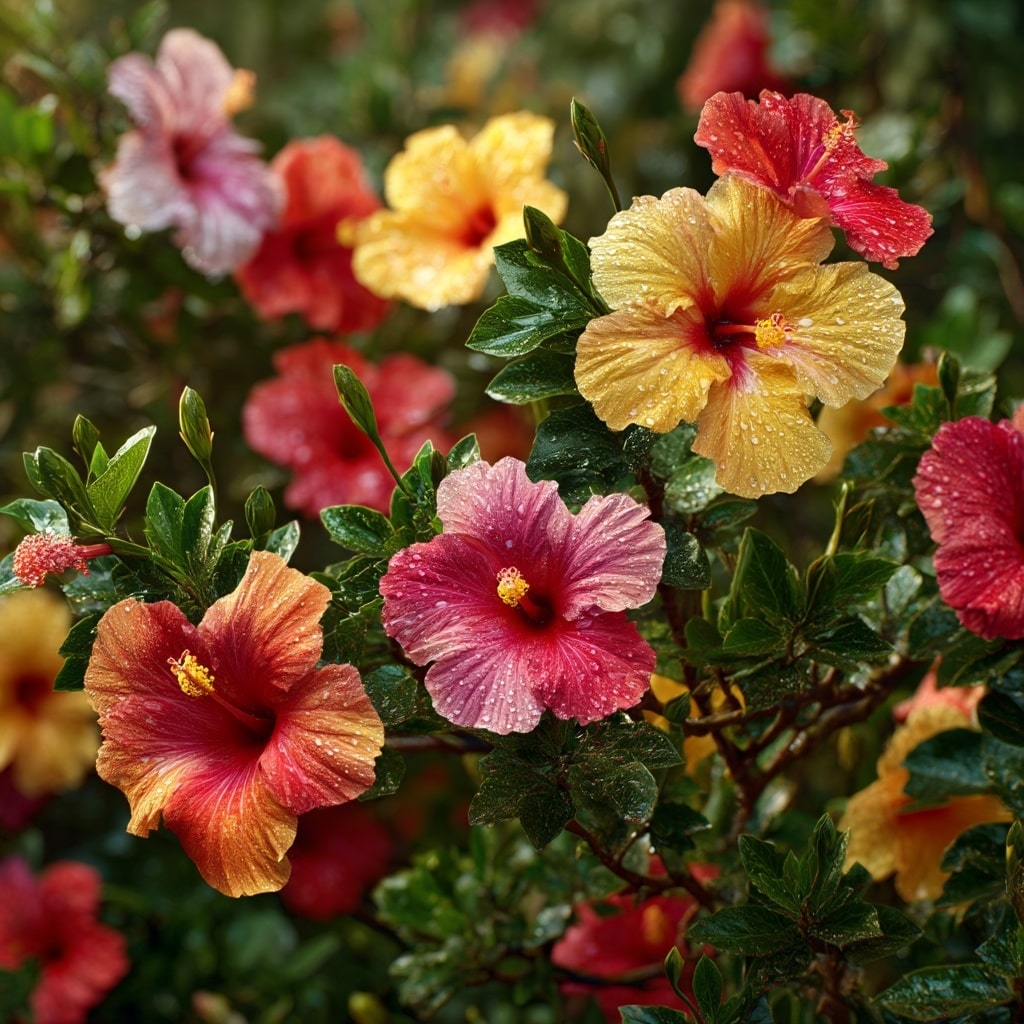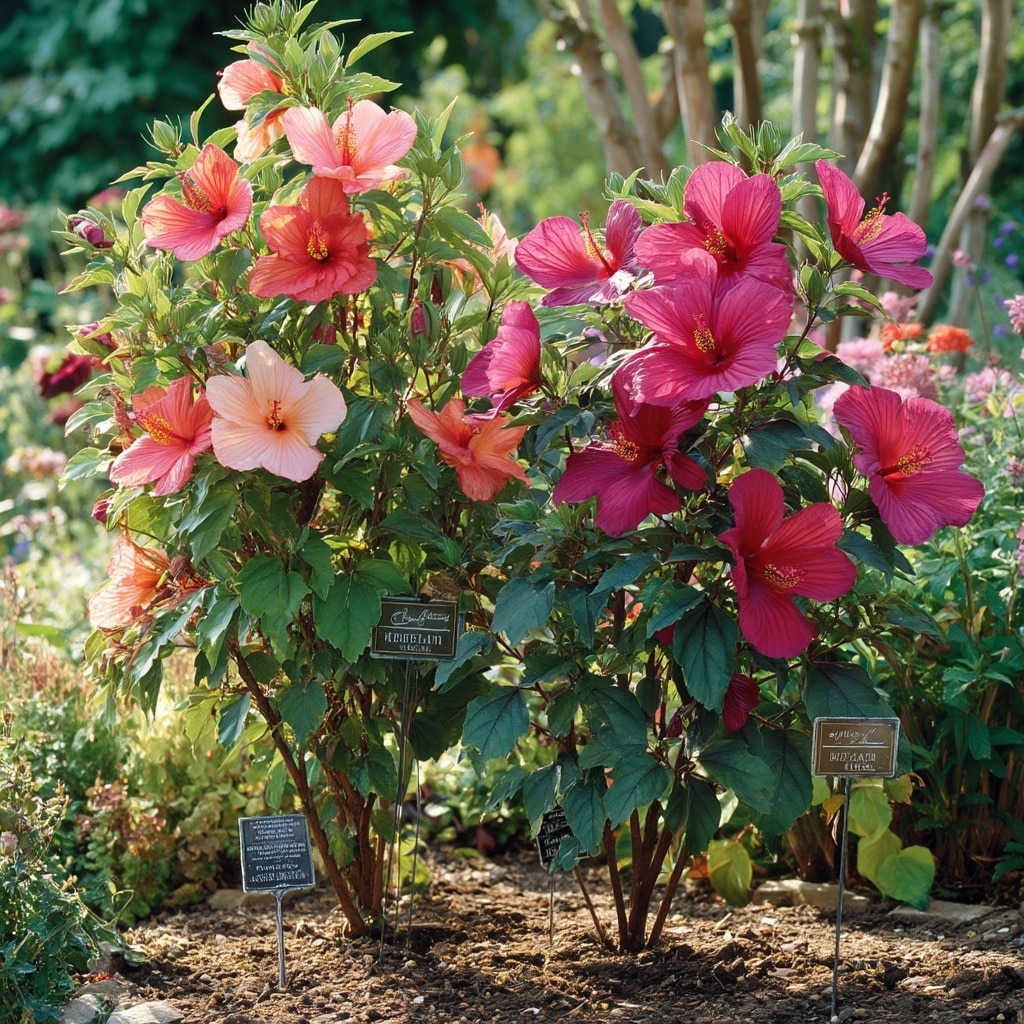Hibiscus flower varieties bring tropical beauty and radiant color to any garden. With their large, vibrant blooms and lush foliage, hibiscus plants are a favorite among gardeners looking to create an eye-catching focal point. Whether you’re drawn to fiery reds, delicate pinks, or sunny yellows, these flowers add a sense of warmth and exotic charm to outdoor spaces. In this guide, we’ll explore the most stunning hibiscus flower colors, their meanings, and simple care tips to help your plants thrive season after season.
Table of Contents
Overview of Hibiscus Plants
Before exploring the many beautiful hibiscus flower colors, it’s helpful to understand the two main types of hibiscus plants—tropical and hardy. Each type offers unique features, making it easier to choose the right one for your garden’s climate and design.
🌴 Tropical Hibiscus
Tropical hibiscus (Hibiscus rosa-sinensis) thrives in warm, humid climates and is known for its glossy green leaves and vibrant, exotic blooms. These flowers often appear in brilliant shades of red, orange, yellow, and pink, sometimes even blending multiple hues in a single petal. Tropical hibiscus is best suited for USDA zones 9–11 and can be grown outdoors year-round in frost-free regions or as potted plants indoors.
To keep tropical hibiscus healthy, provide plenty of sunlight, regular watering, and rich, well-drained soil. They love warmth and should be protected from cold drafts and sudden temperature drops.
🌸 Hardy Hibiscus
Hardy hibiscus (Hibiscus moscheutos) is the perfect choice for gardeners in cooler climates. Unlike its tropical cousin, it can survive cold winters, returning each spring with renewed growth. Hardy varieties often produce enormous flowers—sometimes up to 12 inches across—in bold shades of red, white, pink, and purple.
These plants thrive in full sun and moist soil. Their resilience makes them ideal for perennial gardens, borders, or even as statement pieces in large containers. With proper care, hardy hibiscus can bloom beautifully from mid-summer through fall.
Hibiscus Flower Colors
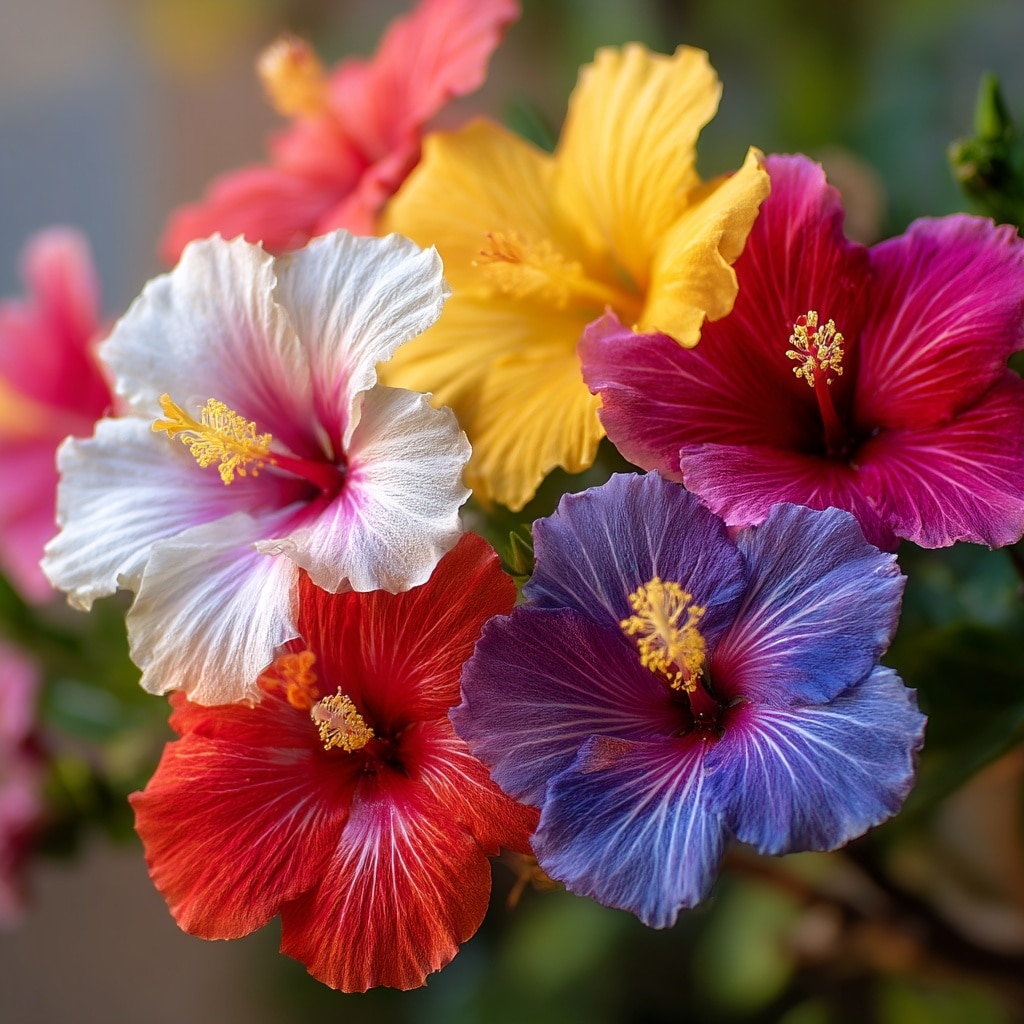
The hibiscus flower is celebrated for its extraordinary color diversity. From fiery reds to dreamy blues, each hue adds a distinct touch of character to your garden. Beyond their beauty, these colors often carry symbolic meanings—representing everything from passion and joy to serenity and purity. Let’s look at the most popular hibiscus flower colors and what makes each one special.
💜 Purple Hibiscus
A purple hibiscus flower symbolizes mystery, elegance, and admiration. Its deep royal tones bring a sense of sophistication to garden landscapes. Purple varieties, such as ‘Lord Baltimore’ or ‘Midnight Marvel,’ are particularly striking when paired with lighter blooms, creating a rich contrast that catches the eye.
💛 Yellow Hibiscus
The yellow hibiscus flower radiates happiness, positivity, and friendship. It’s a cheerful addition to sunny borders and patio planters. Varieties like ‘Sunny Wind’ and ‘Golden Belle’ shine in bright garden corners, offering a joyful pop of color throughout the warmer months.
💙 Blue Hibiscus
Though not a true blue, the blue hibiscus flower (Alyogyne huegelii) features soft lavender-blue petals that add a cool, calming effect to the garden. This variety thrives in warm climates and looks stunning alongside white or pale pink blooms, giving your outdoor space a serene, coastal vibe.
❤️ Red Hibiscus
Bold and timeless, the red hibiscus flower represents love, passion, and vitality. It’s one of the most recognizable varieties, often used in tropical landscapes and festive decorations. Cultivars like ‘Brilliant Red’ and ‘Fireball’ can transform your garden into a vibrant paradise.
🤍 White Hibiscus
The white hibiscus flower symbolizes purity, peace, and grace. Its simple elegance makes it a beautiful backdrop for more colorful blooms. Varieties such as ‘White Wings’ or ‘Luna White’ stand out in moonlit gardens, especially when illuminated by soft garden lighting.
💗 Pink Hibiscus
Soft and romantic, the pink hibiscus flower conveys affection and warmth. With shades ranging from pale blush to vivid magenta, pink hibiscus varieties like ‘Cherry Cheesecake’ and ‘Pink Swirl’ bring a gentle, uplifting charm to any garden setting.
Caring for Your Hibiscus
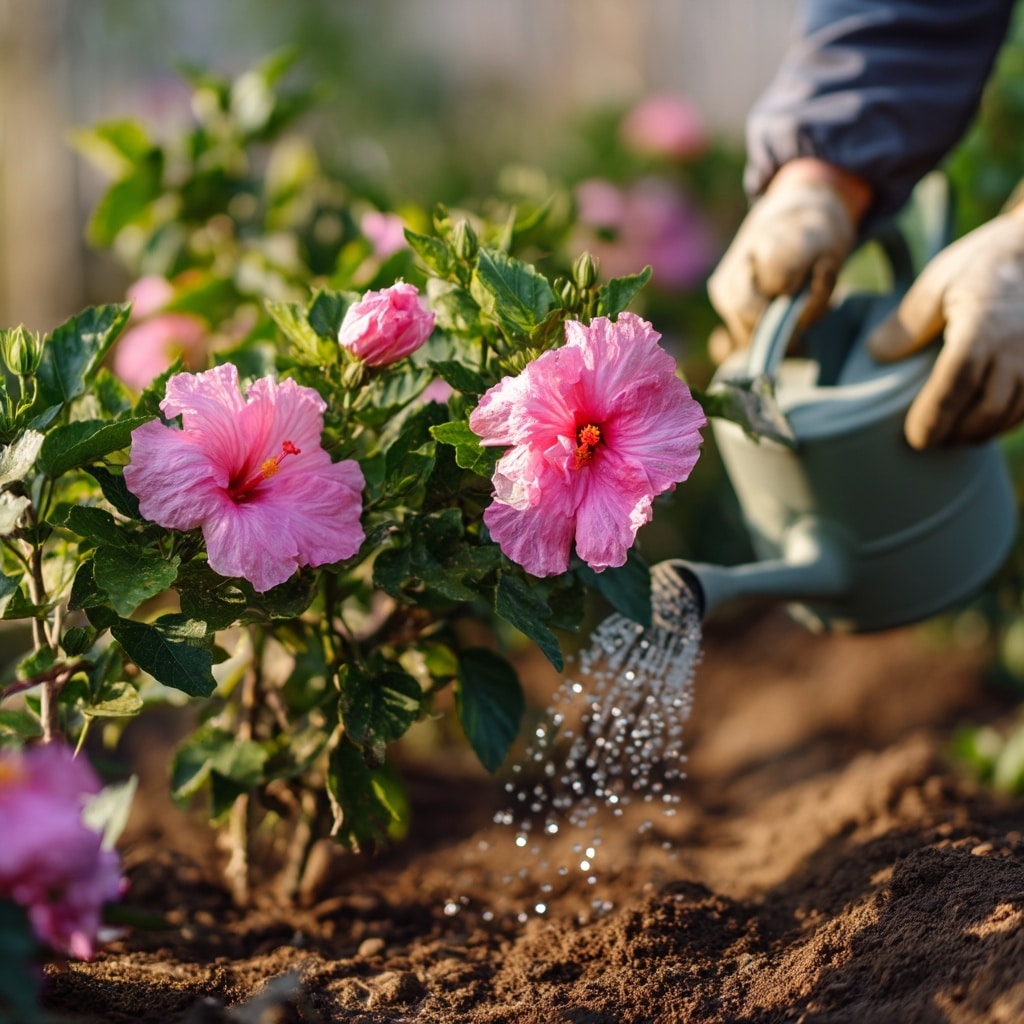
Growing a healthy hibiscus flower is easier than it looks—as long as you meet its light, water, and nutrient needs. With the right care, hibiscus plants reward you with continuous blooms and lush, tropical foliage. Here’s how to keep your hibiscus thriving all season long.
☀️ Light Needs
Hibiscus plants love the sun. Aim for 6–8 hours of direct sunlight daily for optimal flowering. Tropical varieties prefer bright, warm conditions, while hardy types can tolerate partial shade. If you’re growing hibiscus indoors, place it near a sunny window or use grow lights to maintain healthy growth.
🌱 Soil & Watering
A hibiscus flower thrives in rich, well-drained soil. Mix organic compost or peat moss into the soil to improve texture and drainage. Water deeply but avoid soggy roots—allow the top inch of soil to dry before watering again. During hot summer months, hibiscus may need daily watering, especially in containers.
🌡️ Temperature and Humidity
Hibiscus plants flourish in temperatures between 60°F and 90°F (15°C–32°C). Tropical hibiscus dislikes the cold and should be brought indoors before frost hits. Hardy varieties can survive cooler temperatures but appreciate some mulch protection around the roots during winter. Maintain moderate humidity to prevent leaf drop or flower stress.
🌿 Fertilizing & Pruning
Feed your hibiscus regularly with a balanced fertilizer (10-10-10) during the growing season. For continuous blooms, switch to a phosphorus-rich formula every few weeks. Prune in early spring to remove dead branches and shape the plant for fuller growth.
🌸 Propagation & Overwintering
Hibiscus can be propagated through stem cuttings. Take a 4–6 inch cutting, remove lower leaves, and place it in moist soil until roots develop. In colder regions, tropical hibiscus should be overwintered indoors—reduce watering and provide bright, indirect light until spring.
🐛 Pest and Disease Watch
Keep an eye out for aphids, spider mites, and whiteflies. Use insecticidal soap or neem oil to manage infestations. Also, ensure proper air circulation to prevent fungal diseases like powdery mildew or leaf spot.
Frequently Asked Questions
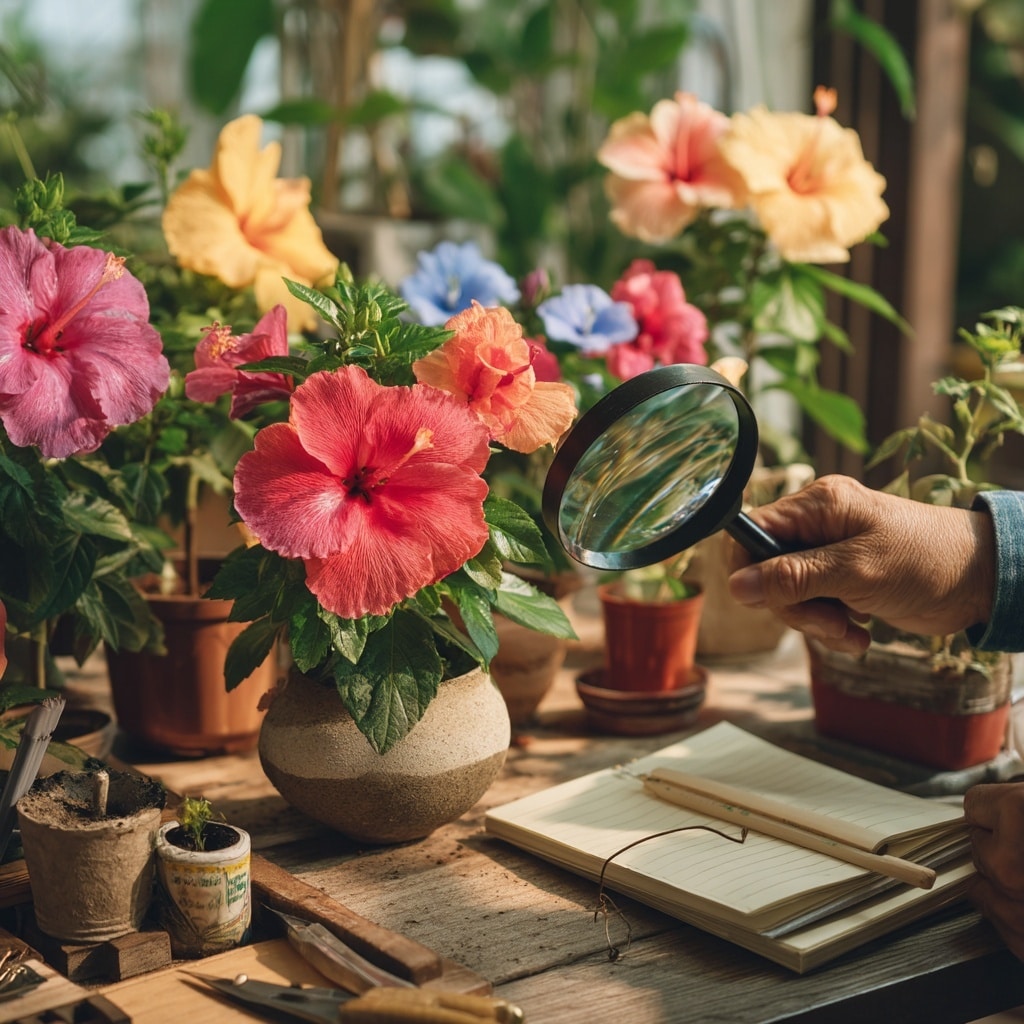
Here are some of the most common questions gardeners ask about the hibiscus flower, along with practical, expert-backed answers to help your plants stay healthy and vibrant.
🌺 1. How often should I water my hibiscus?
Hibiscus plants prefer consistently moist soil, but they don’t like sitting in water. During warm months, water once the top inch of soil feels dry. Container-grown hibiscus may need more frequent watering—sometimes daily in hot weather. Reduce watering in winter when growth slows down.
🌞 2. Can hibiscus grow indoors?
Yes, tropical hibiscus can thrive indoors if placed in a bright, sunny location. Make sure they receive enough light—south-facing windows are ideal. Keep them warm and humid, and mist the leaves occasionally to mimic outdoor tropical conditions.
🌼 3. Why are my hibiscus leaves turning yellow?
Yellowing leaves are often a sign of overwatering, poor drainage, or nutrient deficiency. Check that your soil drains well and avoid waterlogging. Feeding with a balanced fertilizer can also help restore lush, green foliage.
❄️ 4. Can hibiscus survive cold temperatures?
Hardy hibiscus can handle frosty weather, returning every spring. However, tropical hibiscus must be protected from cold. Bring potted plants indoors or move them to a greenhouse before the temperature drops below 50°F (10°C).
🌷 5. How long do hibiscus flowers last?
Each hibiscus flower typically blooms for one to two days, but the plant produces many buds, so new flowers appear continuously throughout the season. Regular feeding, pruning, and sunlight ensure a steady display of blooms.
Conclusion

Brimming with color, charm, and tropical elegance, the hibiscus flower is truly a showstopper in any garden. With proper care, these vibrant blooms can transform your outdoor space into a paradise of texture and life. Whether you prefer the classic red, cheerful yellow, or soothing blue varieties, hibiscus plants offer year-round beauty and joy.
Start by selecting the right type—tropical for warm regions or hardy for cooler climates—then give your plants plenty of sunshine, rich soil, and regular feeding. In return, you’ll enjoy stunning flowers that brighten your garden season after season.

